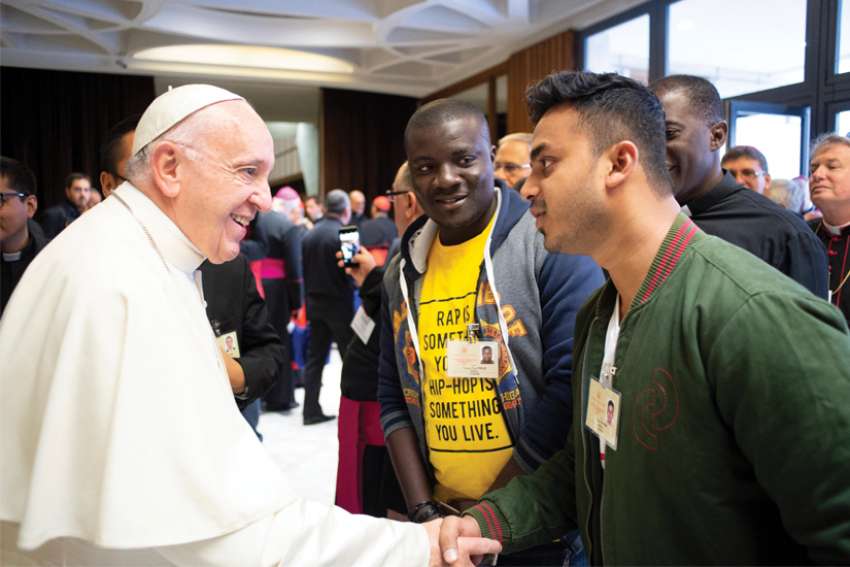Today I see a Church about to “get different.” I see a Church that is in the process of developing a renewed culture of synodality. I say renewed because synodality is not a new word or a new idea for the Church. It dates to the earliest days of the Christian community. In a recent lecture, Cardinal Joseph Tobin described synodality as a vehicle to power the Church whose modern blueprint is in Vatican II. Developed over 50 years, Pope Benedict put the finishing touches on the “propulsion engine” and now, says Cardinal Tobin, Pope Francis “has flipped the switch to on.”
For many of us, synodality is a buzzword for which we have only a vague appreciation. As Catholics who are in the vehicle, though, we would do well to become better acquainted with it.
What is synodality? Before you go further pause and think for a moment what the word brings up for you? How do you experience it as “a buzzword”? Is it one that inspires fear? Hope? Ambivalence? Confusion? Curiosity? Maybe a little bit of all those things!
My Grade 10 religion course prepared me to understand synodality. The theme of the course was “Journey.” Pope Francis, in his address to the synod of bishops on its 50th anniversary in 2015, said, “What the Lord is asking of us is already in some sense present in the very word ‘synod.’ Journeying together — laity, pastors, the Bishop of Rome — is an easy concept to put into words, but not so easy to put into practice.”
Synodality is a way to journeying together in the communion of our faith in Jesus. Why is that not so easy to put into practice? I think it is because of the questions of power and authority that it inevitably asks of us as the Church. Have you ever been on a long road trip with your family or friends? It does not take long for conflicts to arise! Now imagine a road trip that has lasted over 2,000 years! We have been asking ourselves how to share power and make decisions that truly serve the mission entrusted to us by Jesus as a community of faith for two millennia. The questions are often posed in the paradigm of hierarchy vs democracy or clergy vs. laity — always some type of “us vs. them.” Synodality, when we get it right, is the “third way” that breaks through the inevitable impasse.
It takes true courage to walk together in synodality because it requires us at times to stop arguing and truly listen to one another.
Those words — “when it develops, it gets different” — have stayed with me nearly a decade since I first read them. Development, “getting different,” has not always been easy for the laity, religious, priests and bishops for whom the mission of Development and Peace – Caritas Canada (DPCC) is near and dear to heart. We have struggled with other laity, religious, priests and bishops who do not always share our view of development.
And yet.
One of our members, Tom Sagar, was the first to point me towards the synodal way for us at DPCC. When he used the word in an address to our Ontario regional assembly in 2015, I did not really have a clear idea of what it meant. He could see that Pope Francis had “flipped the switch” and his words caught my attention and began my own exploration of the idea.
Synodality, in fact was at the heart of the founding vision of DPCC which the Catholic historian Peter Baltutis has pointed out. “This new organization was not merely a new bishops’ fund nor was it an operation of the laity independent of the Church. Rather, this new organization was, in the words of Judge Alfred Monnin, the first President of the Board of Governors, “of the whole Canadian Church where bishops, priests, religious, laymen and laywomen work together.”
My experience agrees with the Holy Father — it is much easier to write an article about synodality than to put it into practice. But we are trying to work together. We must, because it is the only way we can all truly put ourselves at the service of the People of God in a hurting world and “keep Jesus alive in our midst.”
(Stocking is is Deputy Director of Public Awareness & Engagement, Ontario and Atlantic Regions for Development and Peace.)


